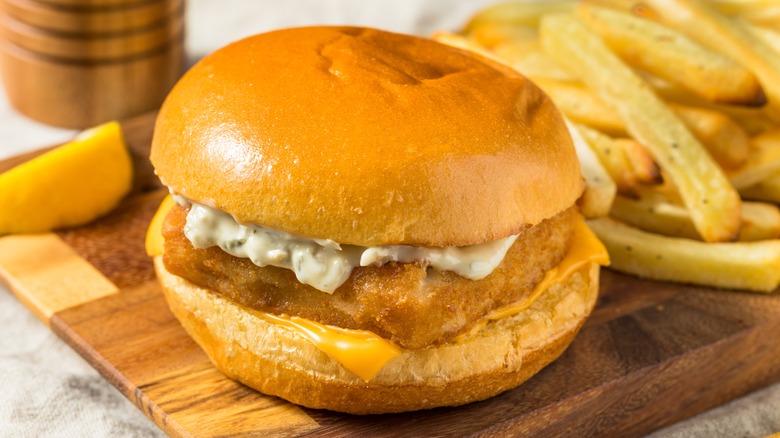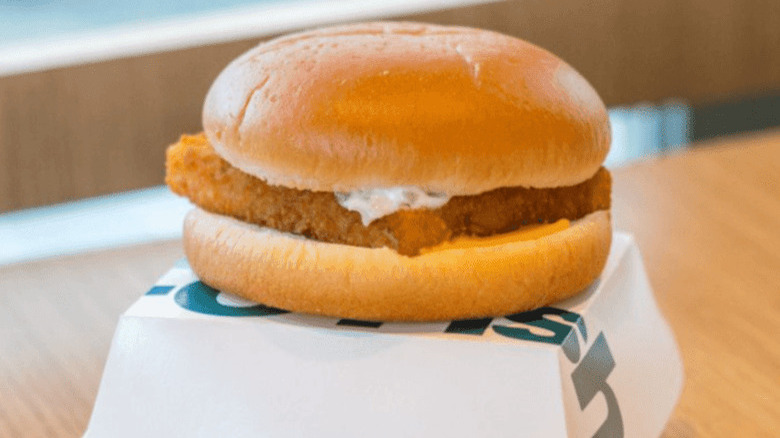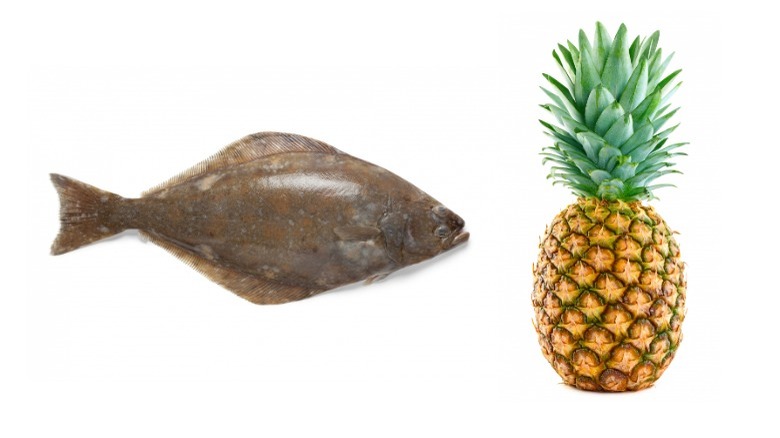The Origin Story Of The McDonald's Filet-O-Fish
In its nascent years of the 1940s, McDonald's menu had just nine items, and six of them were beverages. Hamburgers, cheeseburgers, and fries were the only things to eat. That is a stark contrast to the menu these days, which boasts around 145 items. Over the years, McDonald's has thrown all kinds of new options at the wall to see what sticks, and Ol' Ronnie Mac has taken the L on such infamous failed menu items as the McPizza and McHotDog. But the brand hasn't always been willing to experiment in this way. McDonald's stuck to that nine-item menu for over a decade until one franchisee came up with a sandwich so popular they simply had to sell it.
That franchisee's name was Lou Groen, and he had one of the most unlikely success stories you'll ever hear. When Groen was three, his mother abandoned the family to pursue showbiz dreams, and at age 17, he was kicked out of his house by his father and stepmother. As a homeless teen in Cincinnati, he spent nights in a flophouse and worked every odd job he could find. He worked at a department store, a deli, and a seedy bar where criminals mingled before making his way to the restaurant industry. This led to a chance encounter with Ray Kroc, the mastermind behind the McDonald's empire. Little did Kroc know at the time that he'd just met the man who would change his business forever with a sandwich called the Filet-O-Fish.
Something fishy
Lou Groen and Ray Kroc hit it off, and Groen secured the rights to open the first McDonald's franchise in the Cincinnati area. The problem was, Groen didn't have enough money for the endeavor, so he borrowed from his butcher and baker (no word on what the candlestick maker said). Things got off to a bad start when, on opening day in 1959, Groen's franchise made just $307.38. Total revenue over the first month of business was less than $9,000, and Groen had to fill the roles of janitor and repairman himself. Fridays were especially brutal for the franchise because the surrounding Cincinnati neighborhood was 87% Catholic, and back then, Church law forbade the consumption of meat on Fridays. The Groens earned as little as $75 most Fridays.
Groen's main competition was a nearby branch of the Big Boy chain that seemed to draw away all the Catholic customers on Fridays. The secret to their success was a fried fish sandwich. Groen, who was a Catholic himself, decided that adding a seafood option to the menu was the key to saving his struggling business. He developed his own crispy batter and made tartar sauce from scratch. He made prototype sandwiches from halibut, which at $2 a pound meant that Groen could make a single sandwich for only 30 cents. Once he was confident in his recipe, Groen had just one thing left to do: convince Ray Kroc to expand McDonald's menu for the very first time.
A sandwich showdown
When Lou Groen presented Ray Kroc with his fried fish sandwich, Kroc was less than enthused. In fact, Groen later told the Cincinnati Business Courier that Kroc's response was, "You're always coming up here with a bunch of crap! I don't want my stores stunk up with the smell of fish." However, Kroc agreed with Groen that they needed a meatless option on the menu, and as it turned out, Kroc had been working on his own unique sandwich idea that was a bit more ... outside the box. Kroc proposed something called the "Hula Burger," which was quite literally a cheeseburger with the beef replaced by a pineapple slice. Nothing goes together like tropical fruit and American cheese, right? Kroc and Groen agreed to a wager; they would test both sandwiches at select locations, and whoever's sandwich sold better would make the menu.
You already know how things turned out. On Good Friday of 1962, the Hula Burger and Filet-O-Fish debuted on select McDonald's menus. To call the results of the contest lopsided would be an understatement. They sold 350 Filet-O-Fish sandwiches, and a grand total of six Hula Burgers. Victory went to Groen, on one condition. Kroc wanted to sell the Filet-O-Fish for 25 cents, but it cost 30 cents to make one. Consequently, they had to ditch the halibut and replace it with Atlantic cod. Groen conceded, but always stood by the original. "My halibut sandwich," he told USA Today, "far outshines that one."


